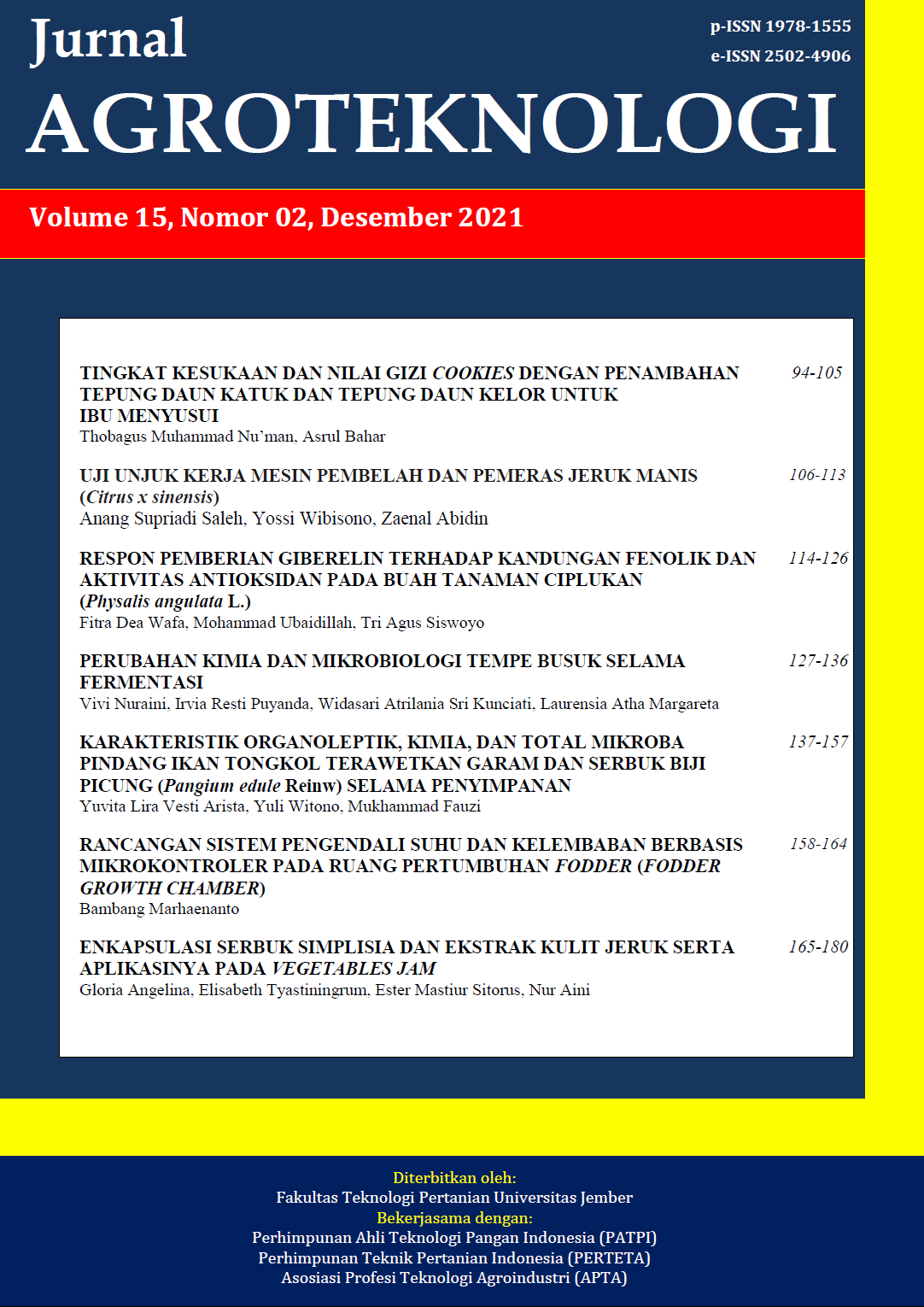TINGKAT KESUKAAN DAN NILAI GIZI COOKIES DENGAN PENAMBAHAN TEPUNG DAUN KATUK DAN TEPUNG DAUN KELOR UNTUK IBU MENYUSUI
DOI:
https://doi.org/10.19184/j-agt.v15i02.24960Abstract
Katuk leaves [Sauropus androgynus (L.) Merr] and moringa leaves (Moringa oleifera Lam.) are plants that can be used as galactagogues. Galactagogues compounds in both can stimulate the hormones prolactin and oxytocin, thereby increasing milk production. Katuk leaves and moringa leaves have a natural taste that is not favoured so that processing and formulation of other ingredients are needed to make the two ingredients more preferable. With an average growth from 2016-2020 of 4.250%, cookies can be a medium to help meet human needs. This study purposed to determine the level of preference and nutritional value of cookies with the addition of katuk leaves and moringa leaves as a snack for nursing mothers. This study used a factorial research design with 2 factors, namely 3 levels of katuk leaf flour (5 g, 10 g, 15 g) and 2 levels of moringa leaf flour (5 g, 10 g). The hedonic test data were processed using the Friedman test and further test with the Wilcoxon signed-rank test. Calculations used to test the effectiveness to determine the selected formula showed that the F4 treatment (5 g katuk leaf flour: 10 g moringa leaf flour) had the highest effectiveness value of 0.95. The results of the chemical test on the F4 treatment had a water content of 1.02%, carbohydrates 76.88%, protein 12.05%, fat 7.85%, and energy contributions of 423.50 kcal per 100 g, and 105.87 kcal per dose serving (30 g).
Keywords: breastfeeding mothers, cookies, katuk leaves, moringa leaves
Downloads
Downloads
Published
Issue
Section
License
Jurnal Agroteknologi has CC-BY-SA or an equivalent license as the optimal license for the publication, distribution, use, and reuse of scholarly work. Authors who publish with this journal retain copyright and grant the journal the right of first publication with the work simultaneously licensed under a Creative Commons Attribution-ShareAlike 4.0 International License that allows others to share the work with an acknowledgment of the work's authorship and initial publication in this journal.
 JURNAL AGROTEKNOLOGI
JURNAL AGROTEKNOLOGI 








.png)
